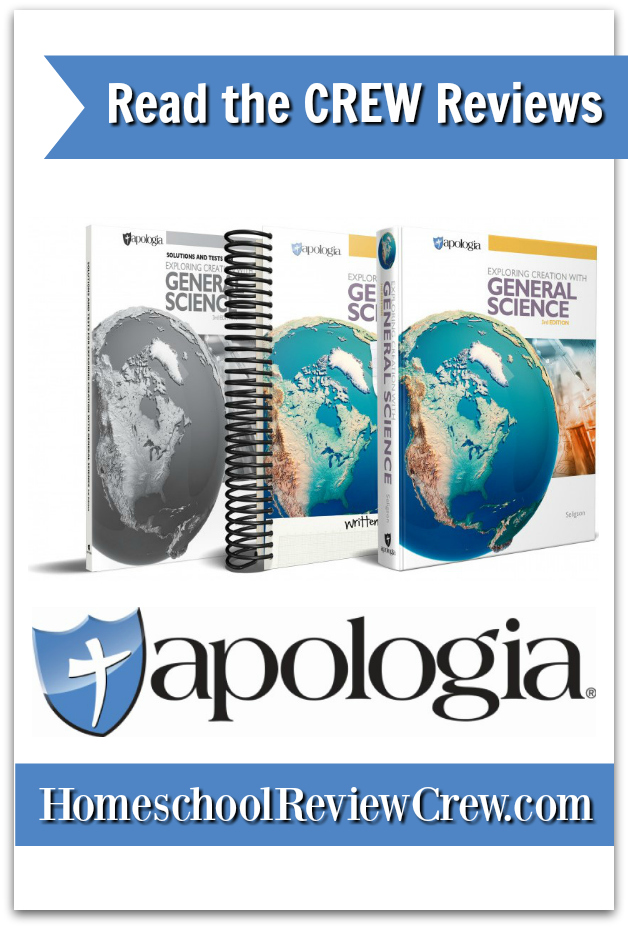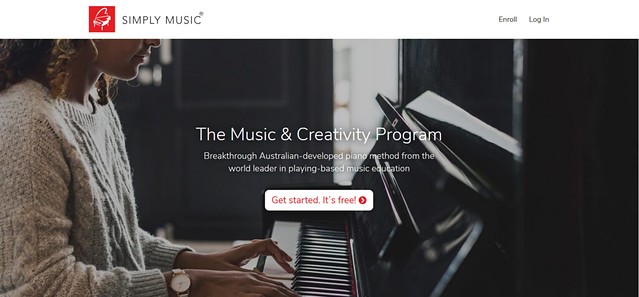My newest middle schooler (6th grade this fall) has dipped his toes into his first middle school science course this summer with
Exploring Creation with General Science, 3rd Edition from
Apologia. For the past several weeks he has gotten a taste of what it's like to really look at the study of science with science experiments, lab write-ups, and discovering more about the history of science.
 |
| Exploring Creation with General Science Textbook and Notebook |
For this review, we received the physical copies of the textbook, notebook, tests, and solutions books. The main part of the course, the textbook, and notebook are in full color with the textbook being a hardback book, and the notebook is a softcover spiral-bound book. Both the textbook and the notebook are required to complete the course. I wouldn't want to even have my child try to complete this course without the notebook as it is necessary to help the student follow along through the text smoothly and pretty much independently.
 |
| Exploring Creation with General Science Test book and solutions book |
The test booklet and solutions book are also required to be able to administer the tests at the end of each module. These books are all black and white and contain the tests and answers. They are pretty straight forward being a quick resource for giving a test and finding solutions to the study guide questions and the tests. It is also nice to have a separate test book so that the student can write directly in it and not have access to the answers. Although, for the first two tests they are allowed to complete the exams with an open book.
 |
| A weekly and daily schedule to make sure you are staying on track to complete the modules in a timely manner. |
One of the things that I always love about Apologia science courses is the daily schedule included in the notebooks. This course has one too! It lays out exactly what to do each day in order to get through a module in a timely manner. The student can check each day off as they complete all the tasks on that day.
 |
| I love this checklist at the beginning of each notebook day. It lays out everything to be done in full detail. |
This course takes that daily schedule even a step further! At the beginning of each notebook section, there is a box titled "what to do" for the day with each thing listed out and a checkbox next to it. This makes it so easy for the child to make sure they do each and everything without missing any steps. I think this is so helpful for middle schoolers! I can't always be there to tell him or her what to do next. They can just look at the list!
 |
| Starting at the very beginning of the course, a very good place to start. |
With this course, it is best to start at the very beginning, and just go through each module in order. As the student goes through the course what they learn builds on from previous modules. For example, in the first module, the student is introduced to formal lab write-ups and will be walked through the write-ups at first, but then later will be expected to know how to do that. The information is also comprehensive and builds on things they learned in previous modules. It's hard to skip around this book.
There is also a lot more formal writing in this course. This is to help middle schoolers prepare for more intensive high school courses. There are many places throughout the notebook for notes, thoughts, and answering in-depth questions. Not only that there are all the lab write-ups I have mentioned. But, I love how this science course guides the middle schooler through all of the writing requirements. It's right on level, and a great introduction.
 |
| A timeline is made for the first module as the student studies the history of science. This is so helpful to keep all those names in order. |
There are many graphic organizers throughout the notebook. This timeline is one example of how the notebook guides the student to organize information as they read. The student did have to collect his own pictures to put on the timeline, but a simple search on google brought up some very usable pictures. With the exception of those pictures I mentioned, most of what the student needs for the notebook is already there. Even the pages that he taped together for this timeline were included in the notebook.
 |
| An example of the graphic organizers in the notebook. This is how the notebook guides the student to take notes from the reading. |
Along with the notetaking, there are also spaces for vocabulary definitions, pictures and places to draw pictures for examples, big blank pages for "creation connection" to write down thoughts or questions, places to paste photographs, and more that we haven't seen yet. It's a very well laid out and complete notebook designed to carry your middle school student through a complete general science course.
 |
| Explore More activities or what seems like mini-experiments are found all throughout the modules. There are also "on your own" questions or things to think through. |
I've talked a lot about the notebook and taking notes, but what about the text? The textbook is the main reading for the course. Along with the reading, sprinkled throughout the text are many activities including experiments, explore more activities, and on your own questions. These experiments and deep thinking questions are a bit tougher than what my boy was used to with the elementary Apologia books. He loves this and has loved the challenge. He has also loved the challenge of writing more, even though it has been tough for him.
 |
| The experiments in this book provide the challenge that a middle school science student should expect. |
The experiments in this science book require a little more. Not just in the experiments themselves, but also in the keeping track and writing down of what you are doing. This was hard for my son as he is used to just doing and tweaking the experiment to get things to work. It'll take some time for him to get used to the fact that he has to write down what he's doing and any changes that he makes as he does the experiment so it's all clear. The details and procedure of science experimentation are important, and that is partly what this course is designed to get the middle schoolers to focus on.
 |
| An experiment of density. The ping pong ball was supposed to move up and that little fish weight was supposed to go to the bottom. The experiment mostly worked, but my boy kept wanting to change things to make it work better. This was the very first experiment, so it was hard to get him to remember to write down his changes. |
 |
| After that first experiment, there was an "explore more" box with a little mini-experiment. This one was looking at water and how quickly the food coloring spread through hot water versus cold water. He didn't have to write anything down for this one necessarily, just an expansion on the experiment. |
The last thing I want to talk about is the study guides. There are a series of questions at the end of each module that helps the student prepare for the test. They focus on the main parts of the text so that the student can prepare for the exam. The answers to these questions are in the tests and solutions booklet. This is a new thing for my beginning middle schooler, to study for a science test. We haven't had formal tests in science during the elementary years. He is getting used to this part too.

The first 4 modules are focused on getting to know the study of science, inquiry, learning to document experiments, the scientific method, and analysis. It can be a bit daunting for a new or even experienced middle schooler, but Apologia has done a good job in introducing that aspect of science. After the first 4 modules, the student gets into more specific subjects like astronomy, earth science, general chemistry, general physics, life science, general biology, and more. There are a total of 14 modules with each module containing 1-3 experiments and several explorations. The final module has a big experiment with several steps that will be a Rube Goldberg machine chain reaction. My son will love the end!
We will love continuing to work through this course in the next school year, and hopefully, he'll be able to complete the big project by spring.
If you'd like to see what others had to say about this curriculum, you can click on the picture below and see what they had to say!



























